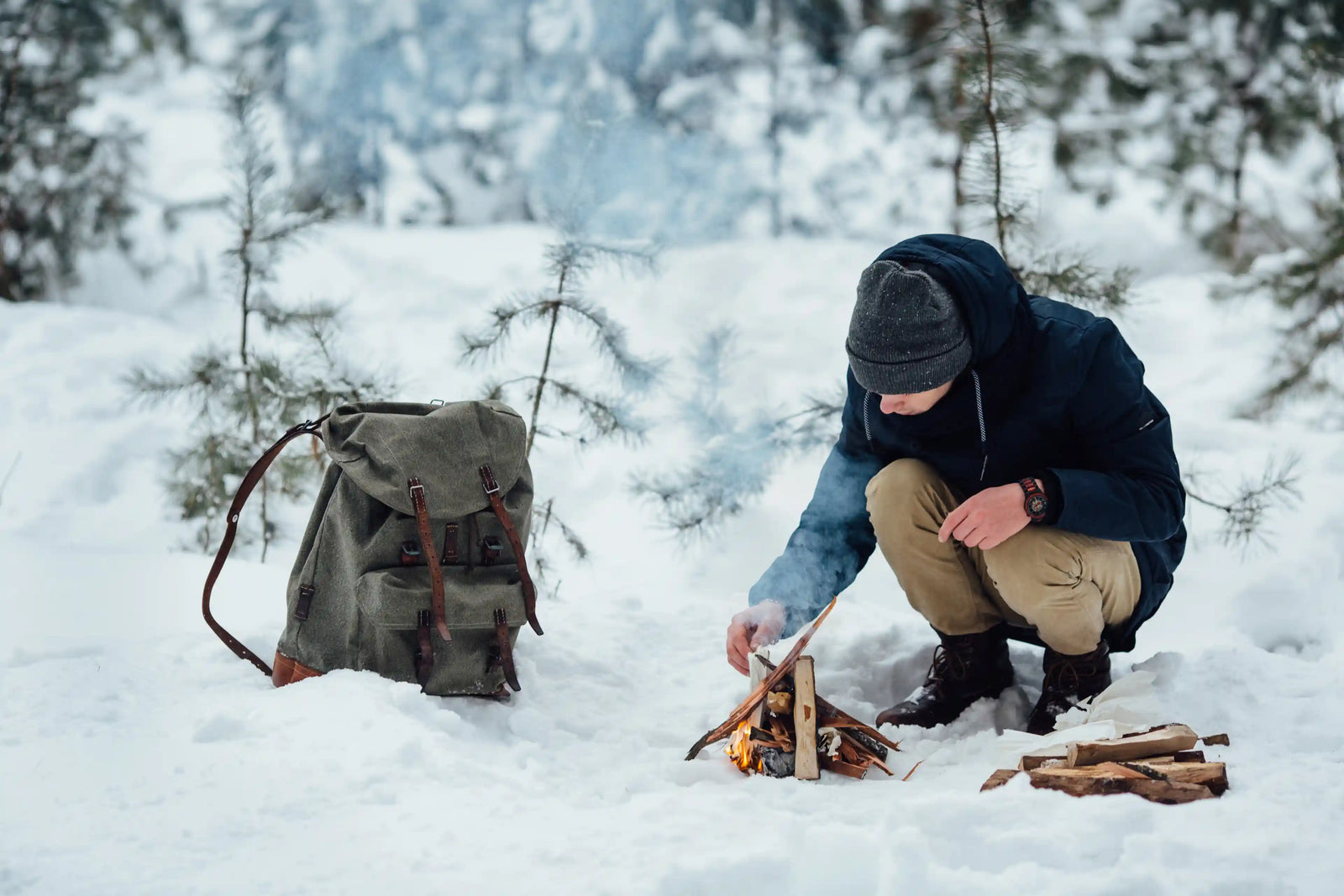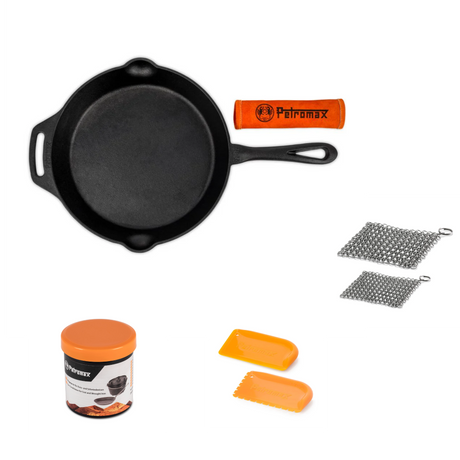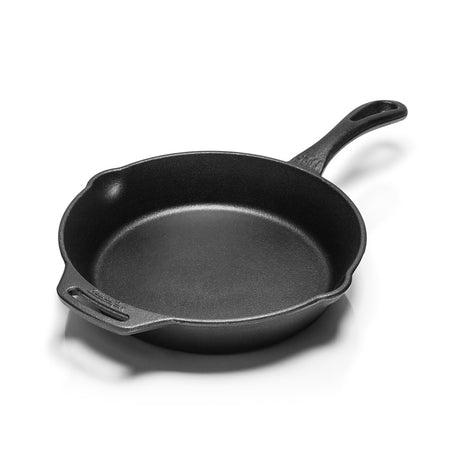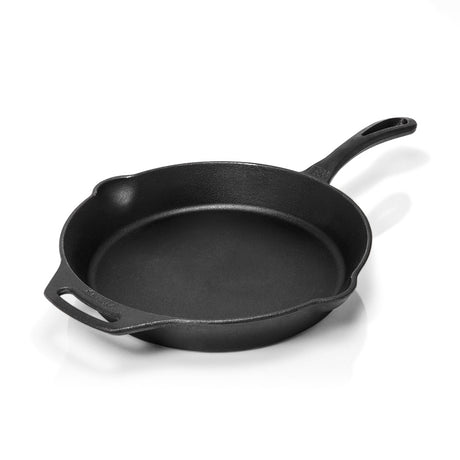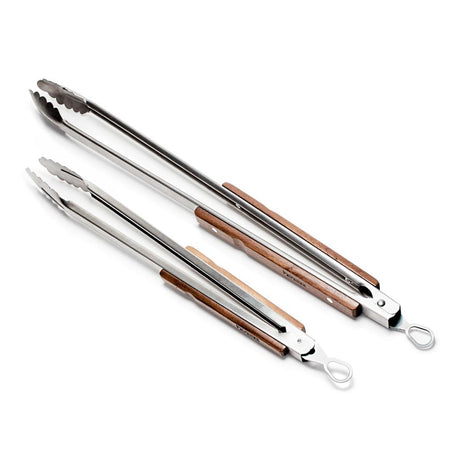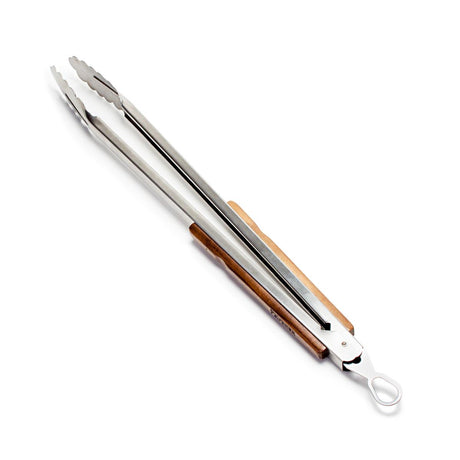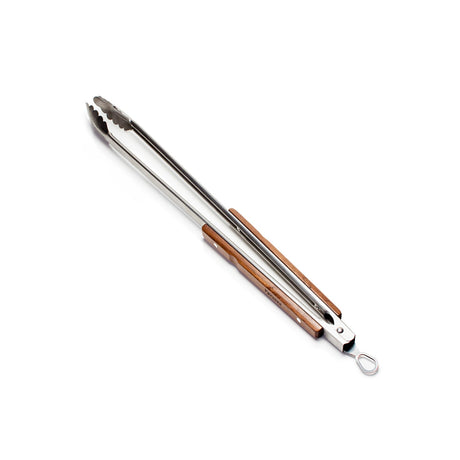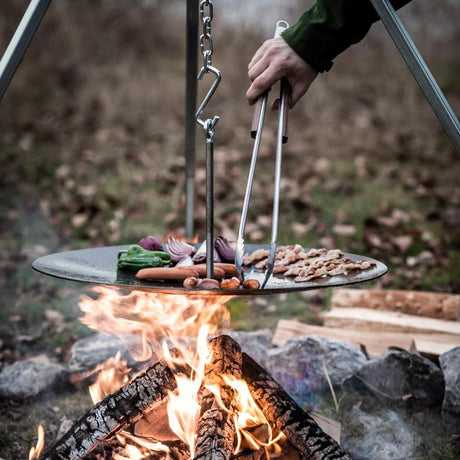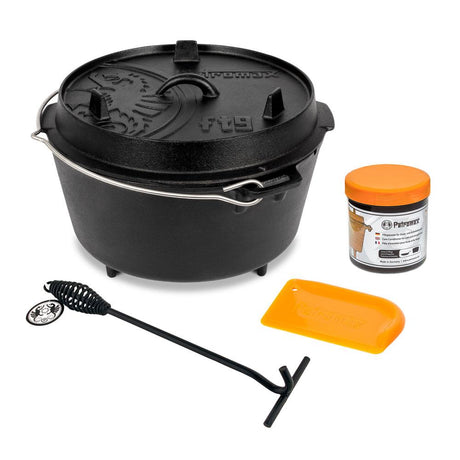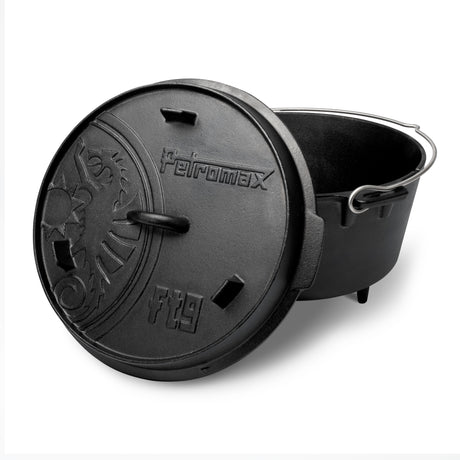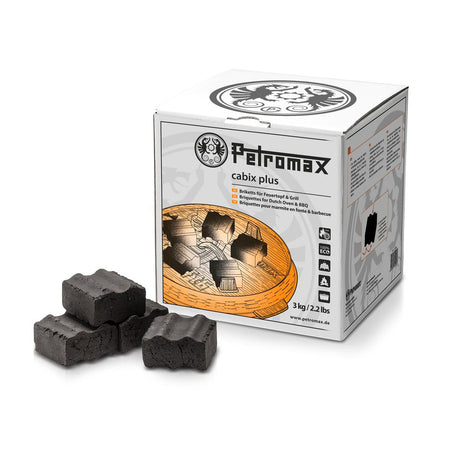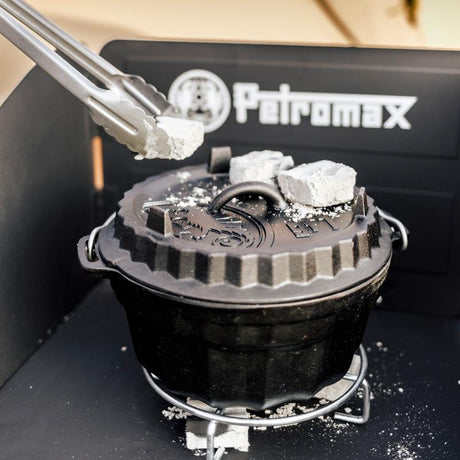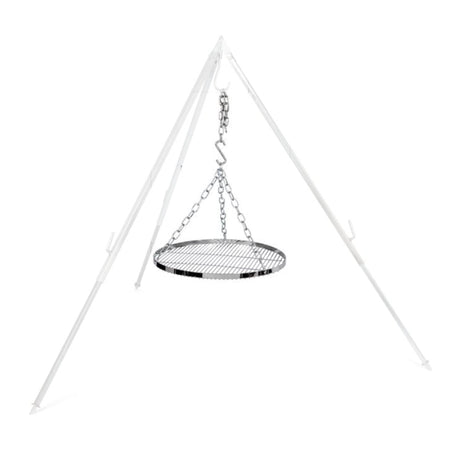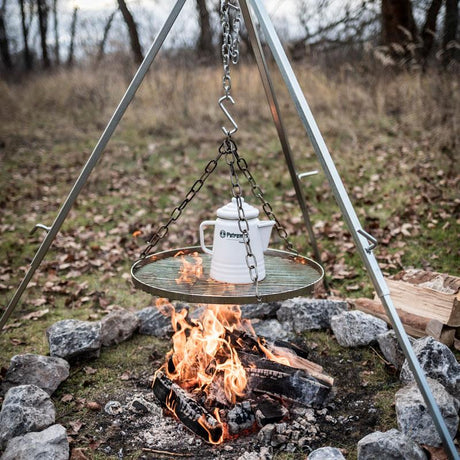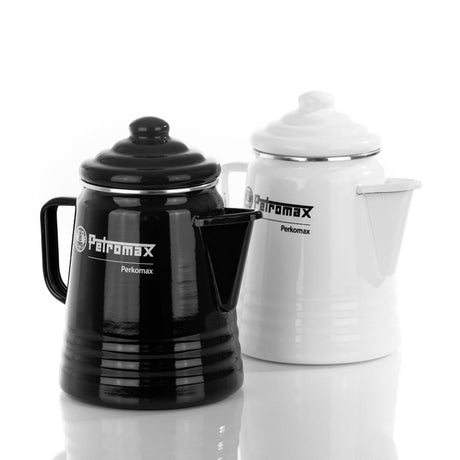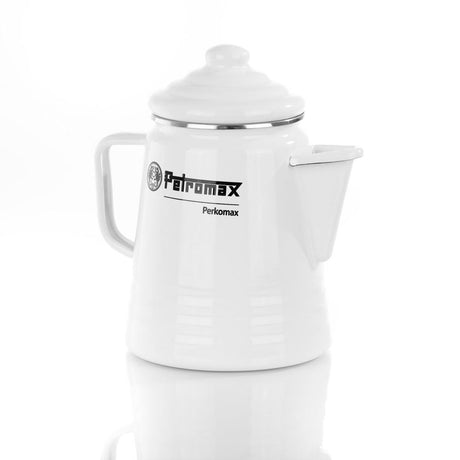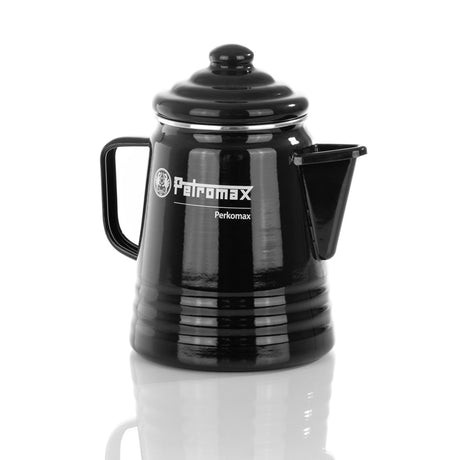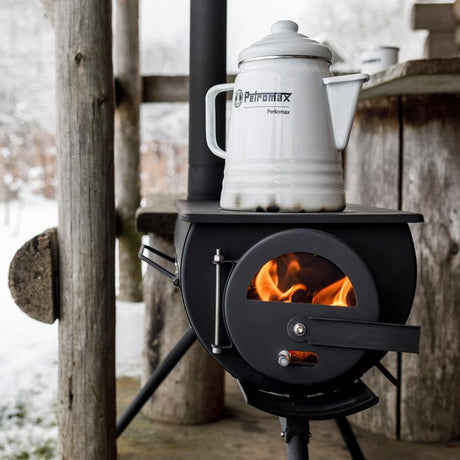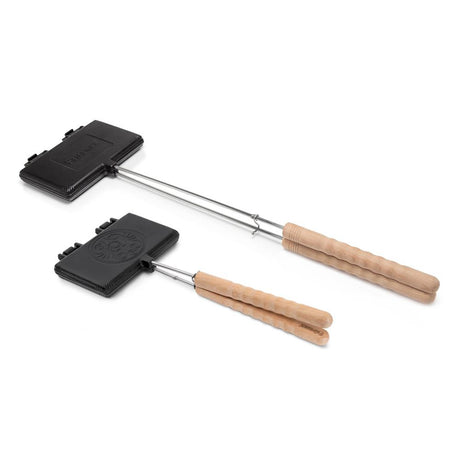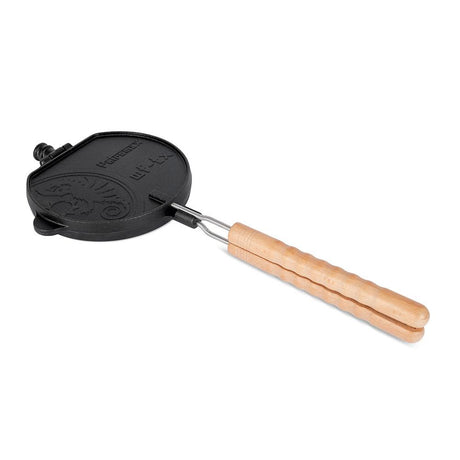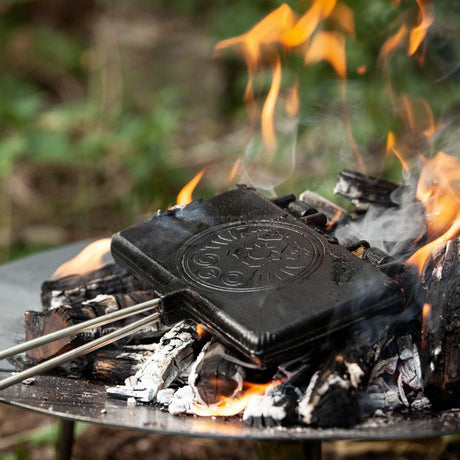A campfire in winter has its very own charm. When there is snow outside and temperatures fall well below zero, the crackling of the flames becomes even cozier. At the same time, it is a real challenge to light a fire in such conditions. Wet wood, frozen ground and biting cold don't make things any easier. To make sure your fire still burns reliably, we'll show you step by step what you need, how to proceed and what to look out for.
Table of contents
What do you need to start a fire in winter?
How do you start a campfire in the snow?
How do you start a fire without matches or a lighter?
Which wood is particularly suitable for starting a fire?
How do you start the first flame?
How do you keep a fire going in sub-zero temperatures?
Is it permitted to start a campfire in winter?
Summary: The most important things in a nutshell
What do you need to light a fire in winter?
You need three basic ingredients for a fire to burn: Fuel, tinder and oxygen. Tinder is the most important thing - without it, you won't get a flame. Birch bark is particularly practical because it can be ignited even when damp. Pine shavings are also ideal as they contain a lot of resin and catch sparks easily.
When using wood, you should make sure that it is as dry as possible. You can often find protected wood that is not soaked under fallen logs or in thick branches. Thin twigs and small wood chips will help you to build up the first flame before you switch to stronger firewood. For a long-lasting fire, hardwoods such as beech or oak are ideal because they burn evenly and for a long time.
The most practical tools are a lighter or a pack of matches. If you want to be more adventurous, you can also use a firesteel. No matter what you choose: Always protect your fuel from moisture, otherwise it will be difficult to start a fire at all.
| Category | examples | tips |
|---|---|---|
| Tinder | Birch bark, pine shavings, dry grasses | Must be absolutely dry, otherwise nothing will catch fire. |
| Fuel | Thin branches, wood shavings, small twigs | Start small, then increase. |
| Firewood | Hardwood such as beech, oak or ash | Burns long and evenly. |
How do you start a campfire in the snow?
A fire in the snow requires a little more preparation than in summer. First, you should build a fire pit. Shovel the snow away far enough to reach the ground. If the ground is frozen, you can lay out a layer of thick branches or stones to prevent the flames from sinking directly into the snow.
Place your tinder - birch bark or pine shavings, for example - in the middle of the fire pit. Build a small "tepee" around it from thin branches and twigs. This shape ensures that enough oxygen reaches the flame. Now light the tinder with a lighter or match and carefully add more small branches as soon as it has caught fire. Only when the flames are stable can you add thicker firewood.
A tried and tested trick is to always have some dry wood to hand. Put a few twigs in a bag or keep them warm under your jacket so you can use them later. This will ensure that your campfire keeps burning reliably in the snow.
👉 You can find the right campfire equipment here.
How do you light a fire without matches or a lighter?
It can happen that your lighter is empty or the matches are soaked. Fortunately, there are alternative methods that you can still use to start a fire. The most popular is the fire steel: with a strong blow, you create sparks that fall onto the tinder. It is important that you use fine and dry material such as birch bark for this, as it absorbs sparks particularly easily.
Another option is the bow drill, a traditional technique that creates embers through friction. You then place these embers in a tinder nest and blow carefully until a small flame is produced. Less common, but also feasible, is lighting with a magnifying glass and rays of sunlight - in winter, however, this only works in bright sunshine.
In any case, the right preparation is important. Without the right tinder and dry wood, you won't be able to light a flame even with the best techniques.
👉 You can read more about this here: Lighting a fire without a lighter.
Which wood is particularly suitable for starting a fire?
Not all types of wood are equally suitable for lighting a fire. Softwoods such as spruce or pine catch fire quickly and are therefore ideal for lighting a fire. However, they also burn quickly and are less suitable for providing heat over a longer period of time. Hardwoods such as beech or oak are the better choice here, as they burn evenly and for a long time.
Tree parts such as birch bark or pine shavings are also valuable helpers. Birch bark can even be used when damp, and pine shavings burn particularly reliably due to their high resin content. It is best to combine both: first softwood for kindling, then hardwood to keep the embers burning for a long time.
How do you light the first flame?
The most exciting moment when making a fire is the first small flame. Place your tinder carefully in the center of the fire pit and light it with a lighter, a match or a spark from the firesteel. Blow gently so that a small ember develops. These embers give off the heat needed to create the flame.
Gradually place thin branches on the embers until the fire has caught. Once you have a stable flame, you can increase the fuel. This will turn the first small flame into a strong fire that will reliably keep you warm.
👉 You can find detailed instructions here: Making a fire.
How do you keep a fire going in sub-zero temperatures?
Once the fire is lit, it's all about keeping it alive - and that's a challenge in sub-zero temperatures. Fuel is consumed more quickly and the cold draws additional energy from the flames. That's why you should add wood regularly instead of waiting until the embers are almost extinguished.
Make sure that your pieces of wood are stacked so that enough air can circulate between them. This way, the flame gets the oxygen it needs to burn. Also, do not store your wood directly in the snow, but on a dry surface. Place moister branches near the fire so that they dry out before you use them.
Is it allowed to make a campfire in winter?
Before you get started, you should find out about the legal framework. Campfires may not be lit everywhere. In many regions, only permanently installed fireplaces are permitted. Open fires are often prohibited in nature reserves in particular in order to protect plants and animals.
The safest thing to do is to ask the forestry office or local authority in advance. Always follow the regulations and choose a safe place for your fire. And very important: extinguish it completely before you leave the area.
Summary: The most important things in a nutshell
- Dry wood, good tinder and technology are crucial.
- Check local regulations before lighting a campfire.
- With the right method, the first small flame will turn into a fire that will reliably keep you warm.
- There are also ways to light a fire without a lighter.
- Safety: choose your fire site carefully and always extinguish it before you leave.
A campfire in winter requires a little more preparation than in summer. You need dry tinder and the right wood, plus a good technique for lighting the first flame. Hardwood ensures long-lasting embers, while softwood helps to light the fire. Even without a lighter, there are ways to start a fire - for example with a fire steel or a bow drill. However, always make sure you follow the legal rules and extinguish your fire completely. This will make your winter campfire a safe and warming experience.
